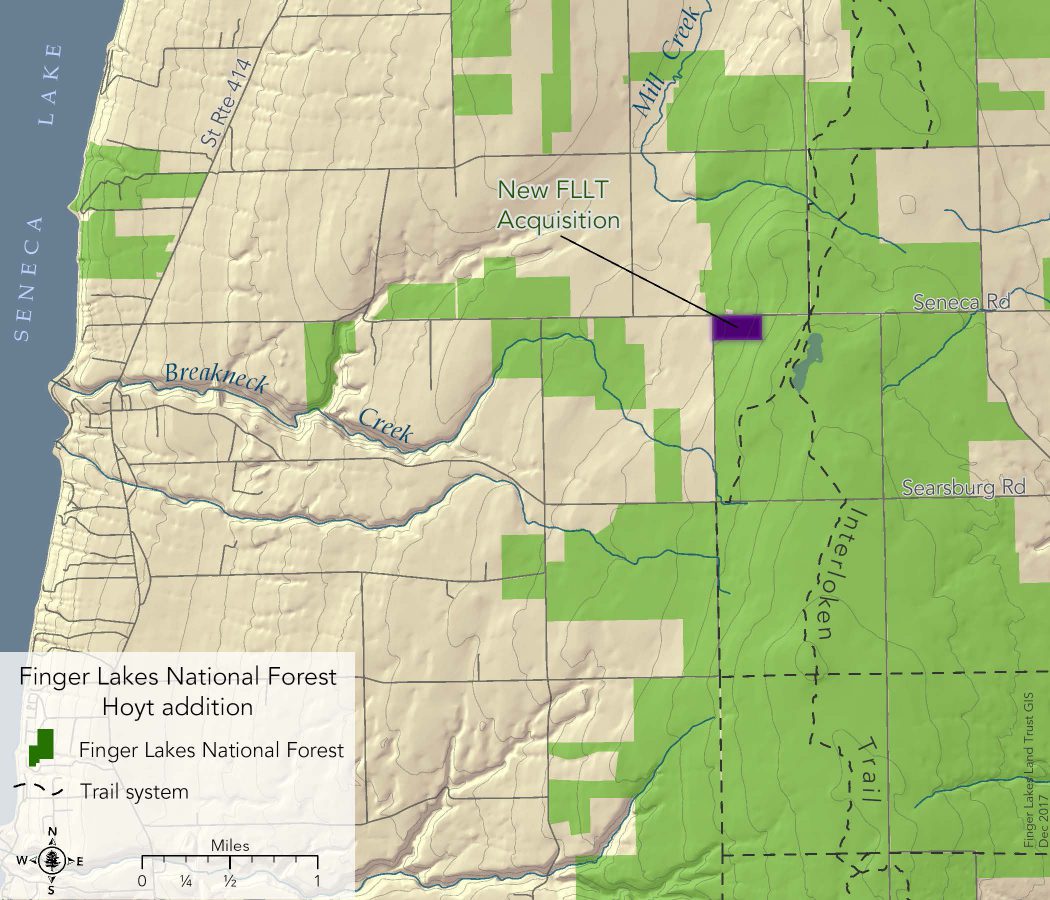The Land Trust acquired 24 acres in the heart of the Finger Lakes National Forest. Located in the town of Hector, Schuyler County, the wooded property is surrounded by existing public land.
The acquisition was made possible by the organization’s “Forever Fund,” a dedicated account created by the Land Trust to make time sensitive acquisitions possible. The fund will be replenished when the property is sold to the U.S. Forest Service in the future.
This latest acquisition was identified as a protection priority because of its location within the national forest and its frontage on two public roads. Subdivision and development of the land would not only eliminate intact hardwood forest but would also degrade the ecological and recreational value of adjacent public lands.
Spanning more than 16,000 acres, the Finger Lakes National Forest is located between Cayuga and Seneca lakes. It is well known for its miles of multi-use recreational trails and dirt roads. The forest’s patchwork of fields and woodlands also provide habitat for a diversity of wildlife and is recognized as one of New York State’s Important Bird Areas.
“Consolidation of public lands surrounded by existing national forest land improves public access and continues to be amongst our highest priorities,” said Jodie Vanselow, District Ranger for the Finger Lakes National Forest. “By quickly moving ahead to protect this parcel, the Finger Lakes Land Trust continues to be a true conservation partner. We look forward to our ongoing partnership with the Land Trust, as well as transferring this property to the national forest whenever funding becomes available.”
This latest acquisition is the sixth land protection project the Land Trust has completed within the national forest. Three projects include the acquisition of “inholdings”—privately owned parcels surrounded by public land, while the other three have involved the donation of perpetual conservation easements. The easements limit development while allowing the land to remain in private ownership and available for traditional uses such as agriculture and forestry.


